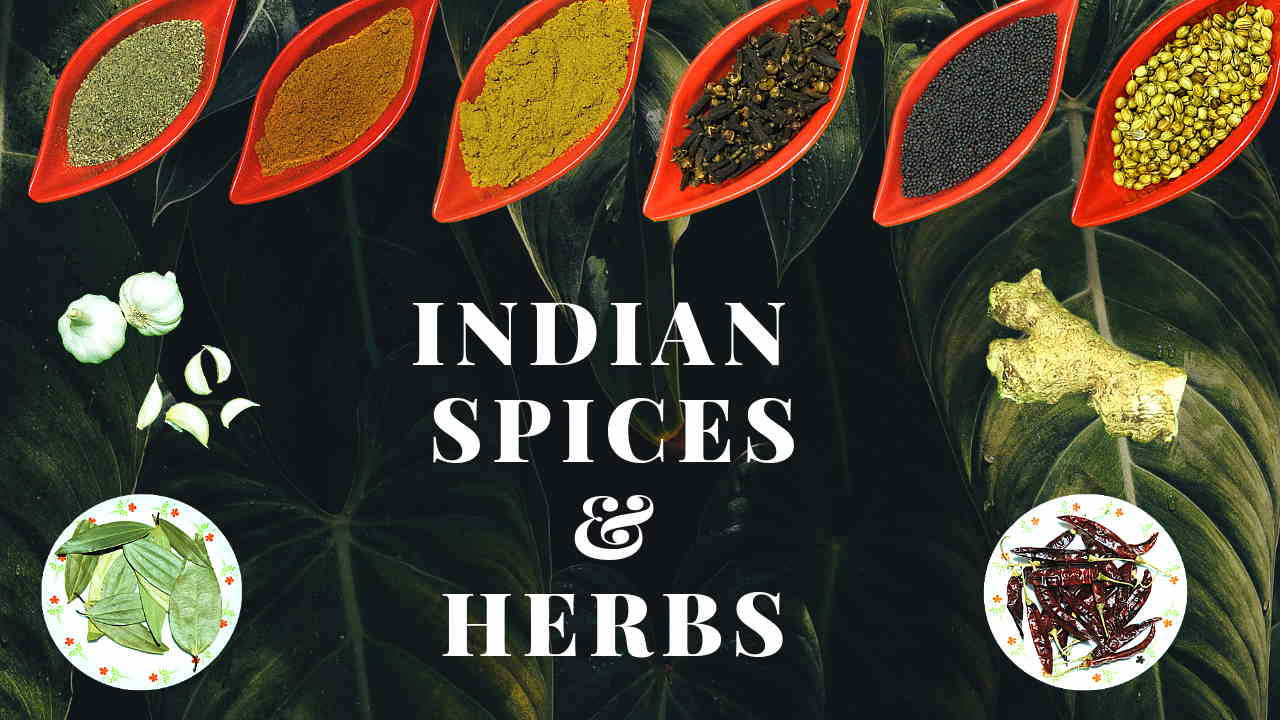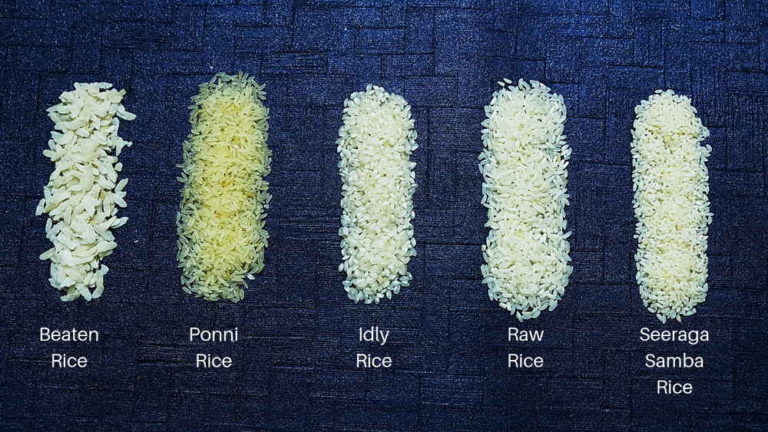Indian Spices List with Pictures (A COMPLETE GUIDE) & Glossary
Indian Cooking is a result of many different skills like identifying/setting up the cookware, choosing the right spices/herbs, cooking techniques like Tempering/Tadka, etc, and much more.
Spices are THE MOST IMPORTANT INGREDIENTS while getting started in Indian Cooking.
A basic knowledge of these spices is necessary in this journey.
Bottom line:
If you want to excel in Indian Cooking (South Indian or North Indian), knowledge of SPICES is a must.
And in this guide I’m going to show you everything you need to know about the Indian Spices.
Let’s dive right in.
- Why Should I use Indian Spices?
- Indian SPICES and HERBS – Categorized for Easy Understanding
- 20 Essential Indian Spices
- When To Add Salt While Cooking Indian Dishes?
- When NOT to Add Salt While Cooking Indian Dishes?
- 6 Essential Herbs
- 5 Optional Spices for Add-On Purposes
- How to Store Indian Spices?
- Spice Box Storage Ideas
- Points to Remember
- Frequently Asked Questions
- Which Indian spices are good for a healthy heart?
- Why Indian Spices are mostly Roasted before cooking?
- How long does Indian Spice last?
- Which spice can I substitute Paprika with?
- Indian Spices Glossary ( in 5 Languages)
- How to Cook Indian Rice Perfectly
Why Should I use Indian Spices?
Without Spices, Indian foods (almost all of them) can’t be cooked!
Indian food is a complete package of all the 6 tastes like sweet, salt, bitter, sour, pungent and astringent. Therefore, it’s necessary to get to know about the spices.
To get you started, below is a list of famous Indian Foods and the varieties of spices that go into it.

There are various reasons why Indian spices are to be used.
Inside The Indian Spice Pantry
Indian SPICES and HERBS – Categorized for Easy Understanding
One thing that people find intimidating about Indian Cooking is the vast array of spices used, whether it be whole spices or ground/powdered spices. Once you start identifying the spices and learn their uses, you will no longer have a daunted feeling.
31 Essential Herbs & Spices For Indian Cooking
By Three Whistles Kitchen
I have grouped all the essential spices and herbs as shown below:
- The Must-Have Spices – Without these spices, cooking is not possible.
- The Must-Have Herbs – Without these herbs, cooking is not possible.
- Optional (Add-On) Spices – As the name suggests, these spices are not essential for basic cooking. These are only for Add-On purposes like coloring.

20 Essential Indian Spices
The SPICES
(Most Frequently Used)
Cardamom
It is a common ingredient in Indian cooking. They are small seed pods with the thin, papery outer skin and black seeds inside.
Cardamoms are of two types – Green and Black.
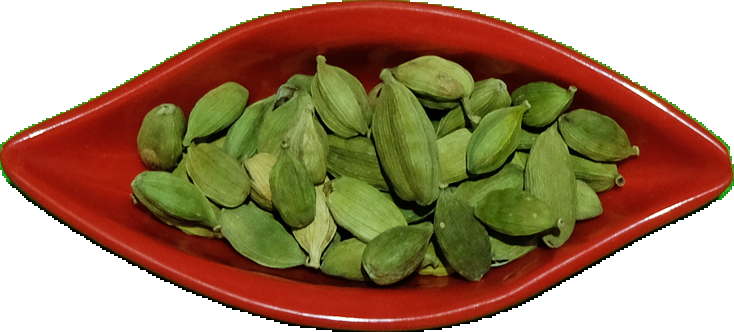
Green Cardamoms:
Black Cardamoms:
Both types of cardamom are widely used in both sweet and savory dishes, particularly in South India.
Green cardamom is often used in traditional Indian sweets and in masala chai (spiced tea). Also, both cardamoms are often used as a garnish or flavouring ingredient in basmati rice and other dishes.
Also, both are often used as a garnish or flavoring ingredient in basmati rice and other dishes.
- Indian Recipes to Cook with Cardamom: Payasam, Mutton Biriyani, Mushroom Gravy, Empty Salna, Coconut Burfi, Coconut Boli/Thengai Poli, lassi etc.
Cinnamon

It is the most popular spice variety and is widely used in many Indian dishes. Cinnamon is a part of tree bark and has the texture to that of tree bark.
It is widely used as an aromatic and flavoring condiment in various cuisines, sweets, spiced tea and traditional dishes. They can be used as a whole or blend together as spice mixes/masalas.
It also has a lot of medicinal properties. The powdered form of the cinnamon bark is used in baking and masala chai. It is usually in a folded/rolled or flat stick form.
Cinnamon and cassia are slightly different from each other. Cinnamon is a bit powerful or strong in flavor compared to cassia. But they both look similar. In case of substituting cinnamon for cassia, make sure to use it in lesser quantity.
- Indian Recipes to Cook with Cinnamon: Spiced Tea/masala chai, Biriyani varieties, South Indian Gravy varieties etc.
Clove

They are aromatic flower buds that are commonly used as a spice in various cuisines.
They can be used as a whole or blend together as spice mixes/masalas.
They need to be used with a lot of caution as they could be over-powerful or might taste very strong or bitter.
It has a very great and powerful medicinal property that comes from its essential oils. They are also used to reduce tooth-ache.
- Indian Recipes to Cook with Clove: Spiced Tea/masala chai, Biriyani varieties, South Indian Gravy varieties etc.
Star Anise

It is a dried star-shaped fruit that is used as a spice in Indian Cooking. It has one of the signature flavours compared to all other spices.
This spice is again used widely in Indian cooking to prepare biryani varieties, pulao’s, curries etc. It is sometimes used in bakery and confectionery too.
Apart from cooking, it is also used in toothpastes, soaps, mouth washes, body creams and also as a flavor in perfumes. Like most of the spices, star anise also has a lot of medicinal properties.
- Indian Recipes to Cook with Star Anise: Mutton Biryani, Chicken Biryani, Mutton Kolambu, Mushroom Gravy and most of the Chettinad or South Indian dishes.
Poppy Seeds

Poppy seeds are dried oilseeds from poppy. It is widely used in culinary industry.
It is highly nutritive and thus used in breads, cookies, cakes, curries, sweets and confectionery.
In most of the South Indian Curries it is used as a thickening agent to thicken the gravy/curry.
It is usually ground to paste along with coconut when used in curries. It can be used directly after slightly dry roasting them.
- Indian Recipes to Cook with Poppy Seeds: Mutton Kolambu, Mushroom Gravy, potato peas curry, coconut poli etc.
Turmeric Powder

Turmeric is a flowering plant, whose roots are used in cooking.
This is either used fresh or dried completely and ground to a fine powder and used in cooking.
It is deep orange-yellow colored and used as a flavoring agent or food coloring agent in Asian Cuisines.
It has a warm, bitter, black pepper-like flavor. Turmeric is widely used in Preparing Ayurvedic medicines. It is a very common/most used ingredient in every Indian Curry recipes and a very good natural antiseptic.
A natural cough reliever – 1/4 tsp of turmeric powder mixed with hot milk and a dash of black pepper powder with a teaspoon of sugar/honey relieves discomfort during cough.
In Tamilnadu and Andhra Pradesh- dried turmeric tuber is tied in a long thread as a Thali Necklace in wedding rituals. Also, it is used to apply a pinch of turmeric powder mixed in little water(made to paste) on new clothing to be worn on occasions.
Turmeric is usually stronger in flavor and color, so be careful as it could stain your clothes and utensils.
- Indian Recipes to Cook with Turmeric Powder: Mutton Kolambu, Mushroom Gravy, potato peas curry, Chettinad or South Indian dishes, Hyderabadi Cuisines, Sweets like Obbattu/Boli/Holige as a colouring agent etc.
Red Chilli & Chilly Powder
It is the most extensively used ingredient in Indian Cooking. It is the key ingredient that adds the spice to your dish.
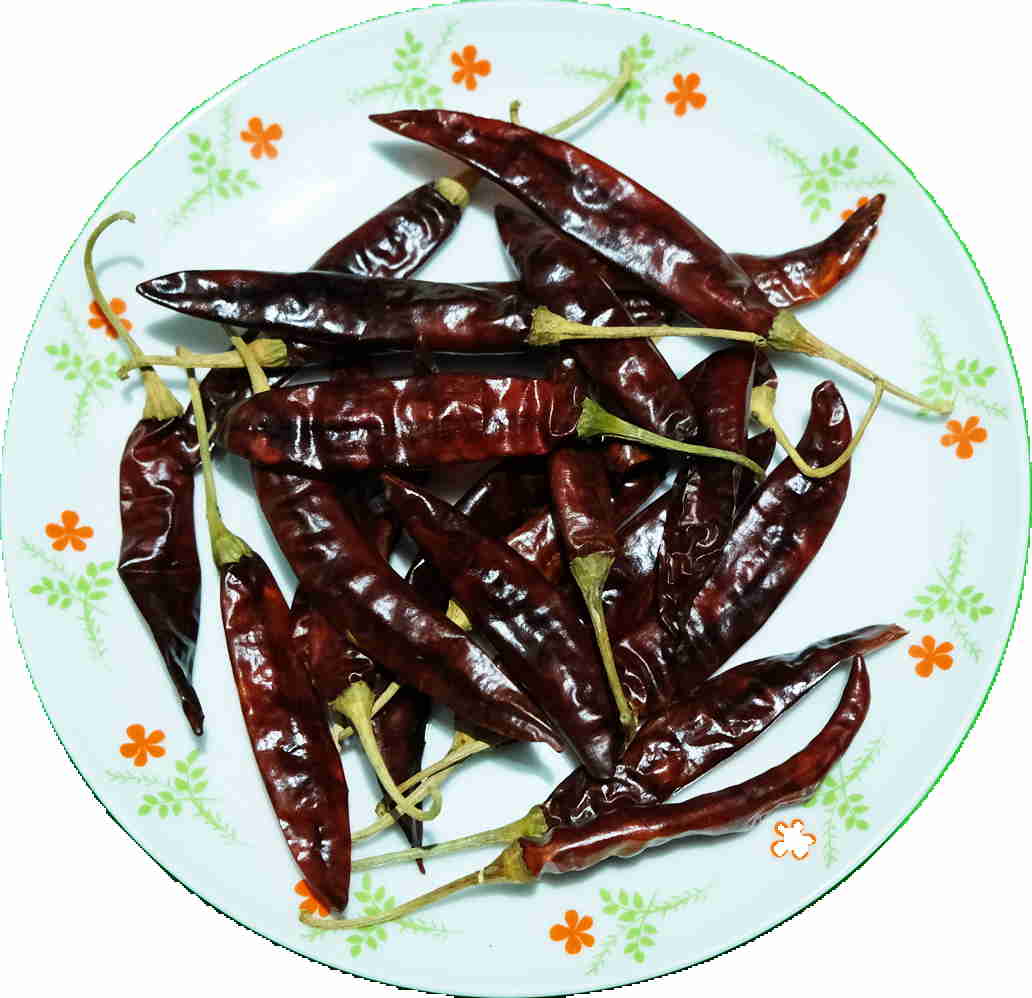
They are sometimes long, flat, wrinkled, dark red or bright red and sometimes even round shaped that is mostly available in South India. This round variety is called as Gundu Milagai in Tamil.
Red Chilli is available in different types in different regions in India. Though the purpose of using red chilly is the same, only the level of spice and color varies between each type.
Red chillies can be used whole or ground to a fine powder. It is used as a whole while tempering or seasoning food like rasam, sambar, coconut chutney, onion chutney or any other chutney varieties, curd rice etc.

It is usually dry roasted and used as an ingredient in spice mixes/masalas like sambar powder, rasam podi, kulambu podi, chutney podi, idly podi etc.
Red chilli powder is used in curries, biryanis, and various other gravy(or kulambu) varieties in South Indian Cooking. You may increase or decrease the amount of red chilly or the powder according to your spice level.
Beginners need to be very careful while adding spice to the food. Always start with a lesser quantity.
- Indian Recipes to Cook with Red Chilly: Vegetable Sambar, Puli Kulambu, Vatha Kulambu, Ennai Kathrikai, Paruppu Rasam, Milagu Rasam, Coconut chutney, onion tomato sabji etc.
Coriander Seeds & Coriander Powder

Coriander is basically a seed variety from the coriander plant. It is one of the most essential spice in the Indian Spice Pantry.
Curries and gravies cannot be prepared without coriander. These coriander seeds need to be dry roasted before grounding it to powder.
It is always suggested to use whole coriander seeds instead of powdered ones to avoid any adulteration in the spice.
Coriander is said to be the base ingredient for most of the spice mixes/masalas such sambar powder, kulambu podi, garam masala, biryani masala etc.
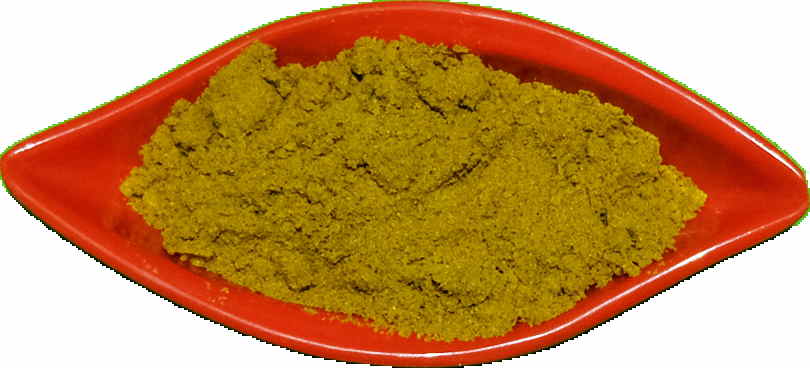
Coriander seeds have a strong flavor over coriander powder.
- Indian Recipes to Cook with Coriander: Vegetable Sambar, Puli Kulambu, Vatha Kulambu, Ennai Kathrikai, Paruppu Rasam, Milagu Rasam, onion tomato sabji, vegetable kurma, mushroom curry, mutton masala, chicken chukka etc.
Garam Masala
Garam masala is a blend of cardamom, cloves, cinnamon, star anise, black pepper, bay leaf, cumin, mace, fennel, coriander and nutmeg.
There could also be small variations to this by adding red chilly and turmeric. This blend of spice mix is said to be a key ingredient in most of the South Indian Cooking Recipes.
This garam masala is said to be very hot and powerful and hence, it needs to be added in small quantities. Beginners must always follow the recipe for exact measurement.
All the above-mentioned spices are dry roasted and then blend to a fine powder to prepare this garam masala. It is always optional to add garam masala to the dish. But if you add it will enhance the taste of the dish.
Indian Recipes to Cook with Garam masala: Vegetable kurma, mushroom curry, mutton masala, chicken chukka, chicken 65, mutton biryani, chicken biryani etc.
Black Peppercorn & Pepper Powder

Black pepper is a flowering vine cultivated for its fruit, known as a peppercorn, which is usually dried and used as a spice and seasoning.
For best results, these black peppercorns are slightly roasted and ground to powder for and used in various South Indian dishes.

These pepper have a high level of medicinal value, which does not give you the freedom to use a lot. Spices are always to be used in smaller quantities.
- Indian Recipes to Cook with Black Pepper: Venn Pongal, Madurai Mutton Kolambu, Mutton chukka varuval, Mutton Ghee Roast.
Cumin Seeds

Cumin is a flowering plant whose fruit is dried to remove the seeds. These dried cumin seeds are then used in many Indian and western cuisines.
It has a slightly strong, spicy flavour and possesses a lot of medicinal properties.
Cumins are best when used whole, instead of the powdered form. Cumins if used as a whole, needs to be added in the oil to help it impart its flavour.
Freshly ground or crushed cumin also taste good while added to the recipe like gravies and to season salads.
It is also a key ingredient in making spice mixes/masalas. It needs to be dry roasted before being ground.
The powdered cumin are not just used in curries, but also in preparing Kashayas (Herbal decoction).
- Indian Recipes to Cook with Cumin Seeds: Venn Pongal, Madurai Mutton Kolambu, Mutton chukka varuval, Mutton Ghee Roast.
Fennel Seeds

It is a highly aromatic and powerful herb used in Indian Cooking. It is slightly bigger compared to cumin.
Fennel has a very strong, spicy and slightly sweet taste. It is sometimes used as an “Aftermint” or a Mouth Freshener. It can be used as a whole or powdered form.
Fennel is similar to cumin, where they need to be dry roasted before being ground to a fine powder.
- Indian Recipes to Cook with Fennel Seeds: Any Non-vegetarian dishes would have fennel in it and also vegetarian kurma varieties.
Asafoetida

It is a commonly used condiment in Indian Cooking. This spice acts as a very good digestive aid.
It is mostly used in vegetarian dishes in India.
It plays a vital role in enhancing the flavors in the food.
Usually, asafoetida is added to hot oil and cooked for 2 seconds before adding it to the food. In South Indian Cooking it is added along with the tadka/tempering to season vegetable sambar varieties, rasam, chutneys etc.
Asafoetida is available in 2 forms – Cubes/blocks or Powdered.
- Cubed/block asafoetida needs to be grated or crushes before being added to the recipe.
- Powdered form can be added directly in cooking.
- Indian Recipes to Cook with Asafoetida: Vegetarian dishes like vegetable sambar varieties, rasam varieties etc will have asafoetida in it to enhance the flavour of the dish.
Mustard

Mustard is a condiment made from the seeds of the mustard plant. It is usually black or dark brown or sometimes dark yellow too.
Mustards are dry roasted and blend along with other spices to prepare spice mixes or masalas. It is also crushed and made into a paste or sauce for seasoning sandwiches, burgers etc.
Mustard seeds are a staple in most of the South Indian cuisines such as Curry or gravy varieties and Kulambu varieties. It is also used as a tempering or seasoning ingredient for Chutneys, sambar, rasam, curd etc.
Mustard seeds are ground to produce mustard oils and is widely used in North Indian Cooking. It slightly has a bitter, smoky flavour.
In South Indian Cuisines, mustard is usually added at the beginning to the hot oil and is allowed to splutter/crackle so as to release all its flavour. It is also sometimes added at the end as a tadka/tempering.
- Indian Recipes to Cook with Mustard: Most of the South Indian Vegetarian and Non-Vegetarian dishes would have mustard in it.
Salt
Any dish you prepare would taste good only when you add the adequate amount of salt to it. It is one principal ingredient in Cooking.
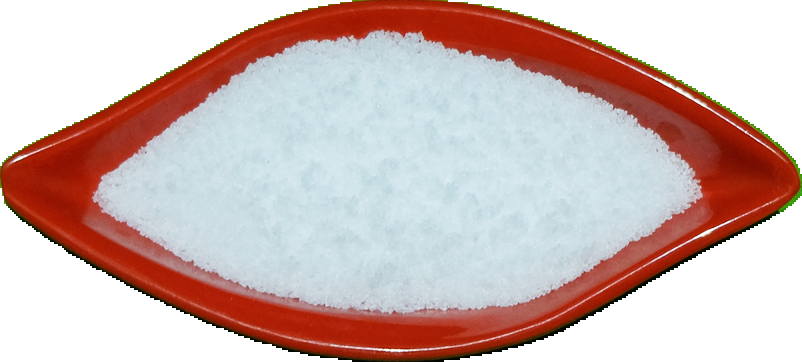
Salt not only increases the flavor of the food, but it also balances the fluids in our body, they act as important electrolytes in our body, etc.
Salt brings out the natural flavor of foods. It is also a very good natural preservative. Salt can be crystalline (in crystal form) or powdered form.
Crystal Salt needs to be used carefully as they have more saline content compared to powdered form.
I recommend using crystal salt for cleaning chicken or mutton or fish or any meat. As the crystals act as a scrub to wash the meat well. Salt also kills germs and removes dirt easily.
- Indian Recipes to Cook with Salt: Most Indian dishes contain salt. Even few desserts and juice include a pinch of salt to enhance the flavors of the food.
When To Add Salt While Cooking Indian Dishes?
- At the Beginning:
Salt can be added at the beginning along with onions. This helps cook the onions faster, thereby decreasing the cooking time. - In the Middle:
Salt can be added in the middle of the cooking process along with vegetables or meat or eggs or rice. This allows the vegetables or meat etc to absorb some amount of salt into it and helps the food to taste better. Else, the food would taste bland. - At the End:
Taste your food little, add salt only if required to make it taste perfect. Else DO NOT add salt at the end. - During Blanching/Boiling:
Always add a very little amount of salt while blanching or boiling vegetables or meat or rice, so the salt gets to penetrate or absorb into the food. But make sure not to add the complete salt required for the recipe while blanching. - To Clean Meat:
Add Salt, preferably crystal salt, to the raw meat along with water for cleaning (before starting to cook). Also, add turmeric powder to clean the meat along with salt or in different batches. and make sure to wash off the salt and turmeric well along with the dirt and germs in the meat. Salt and turmeric act as preservatives and antiseptic.
When NOT to Add Salt While Cooking Indian Dishes?
- NEVER add all the salt required for the dish at the end. Taste your food once before serving, add salt only if you feel it is less.
- NEVER add salt while cooking any type of Dal/Lentils. It will not cook properly and fully if you add salt along with dal.
- NEVER add salt all at once, if you are a beginner. Add them in batches or as per your recipe.
- NEVER add salt when in doubt if you have added or not. Taste your food a little, and then add if required.
6 Essential Herbs
The HERBS
(Most Frequently Used)
Ginger

Ginger is a root variety that is widely used in Indian dishes and for medicinal purposes.
It has a strong, spicy flavor in it which helps in digestion. All non-vegetarian recipes usually are prepared with ginger paste.
The ginger being a root, its washed thoroughly and cleaned to remove the mud. It is then peeled and crushed in a mortar & pestle or blender to a paste or ground coarse.
Ginger-Garlic paste is one main ingredient used in most of Indian Cooking.
- Indian Recipes to Cook with Ginger: Any Non-vegetarian dishes would have ginger in it and also vegetarian kurma and biryani varieties.
Garlic
It is a widely used spice ingredient in most of the South Indian Recipes. The flavor of garlic is really so aromatic and it can just do magic in enhancing the taste of your food.

It tastes better when added finely chopped or as a paste in Indian curries, biryanis, and any other veg and non-veg dishes.
Like most of the spices, Garlic too has a lot of health benefits.
Ginger-Garlic paste is one main ingredient used in most of Indian Cooking.
- Indian Recipes to Cook with Garlic: Any Non-vegetarian dishes would have garlic in it and also vegetarian kurma and biryani varieties. You may also try Galic Curry/Poondu Kulambu for plain white rice.
Bay Leaf

It is an aromatic leaf popularly used in Indian Cooking. These bay leaves are usually used in the dried form in Indian Cooking.
This spice generally has a very strong flavor and needs to be removed from the food immediately after cooking.
It gives a very distinctive flavor and fragrance when used in cooking. Mostly it is used while preparing biryanis, curries, and most of the non-veg dishes in South India.
Bay leaves can also be crushed or ground before cooking. Crushed bay leaves impart more fragrance than whole leaves, but are more difficult to remove, and thus they are often used in a muslin bag or tea infuser.
These leaves are also said to have a lot of medicinal properties in them.
- Indian Recipes to Cook with Bay Leaf: Mutton Biryani, Chicken Biryani, Mutton Kolambu, Mushroom Gravy and most of the Chettinad or South Indian dishes.
Curry Leaf
Curry leaves have a very peculiar flavour and aroma. They create magic when added to Indian foods.
These fresh curry leaves are just washed and added directly (no need to chop) into the food.
Curry Leaves are mostly added to the tadka for a dish or can be added at the beginning of dishes. Just follow our recipes.
- Indian Recipes to Cook with Coriander Leaf: Most of the dishes it is added at the end of preparation as tadka or sometimes used to garnish too.
Coriander Leaf

Coriander leaves are essential herbs that are mostly used in garnishing a dish. They are finely chopped and sprinkled over the food.
They are also used to make chutneys and paste varieties. Sometimes, they are ground to a paste with mint leaves and used as a spread for sandwiches, chaat recipes, as dips etc.
The absence of coriander leaves in South Indian dishes like sambar, rasam, biryani varieties etc can be felt when you don’t add them. It is a must to add them in South Indian sambar and many other dishes to get the real flavor. It is not necessary to cook after you add these leaves. They are the best when added fresh.
- Indian Recipes to Cook with Coriander Leaf: Most of the dishes it is used to garnish or added chopped at the end of preparation.
Mint Leaf (Pudina Leaf)

Mint leaves have a very fresh and cooling flavour.
They are not necessarily used in all dishes but are used to prepare chutneys for idly and dosa.
They also are used in the preparation of biryanis and pulaos. Mint leaves are blend to paste along with coriander leaves to make a green chutney that is used as spreads in bread, roti/chapati/paratha, in chaat recipes and are also used as dips.
They are also used to prepare lime soda which helps in digestion.
- Indian Recipes to Cook with Mint Leaf: Chutney varieties for idly/dosa, Mutton Biryani, Chicken Biryani, Mutton Kolambu, Mushroom Gravy and most of the Chettinad or South Indian dishes.
5 Optional Spices for Add-On Purposes
Optional (Add-On) SPICES
(Occasionally Used)
Mace & Nutmeg
Mace & Nutmeg are optional. But when used in Indian dishes, it gives a peculiar flavor to the food.
Mace, is the dark-orange or red coloured outer covering of nutmeg. This complete spice is dried until the outer layer turns golden-orange or slightly dull colour. Once, the colour is changed, the outer covering is removed from the nutmeg.
These dried outer covering is the Mace and can be used directly in Indian Cooking. Whereas, the pulpy or hard nutmeg needs to be cracked open or grated before using them in cooking.
- Indian Recipes to Cook with Mace & Nutmeg: Mutton Biryani, Chicken Biryani, Mutton Kolambu, Mushroom Gravy and most of the Chettinad or South Indian dishes.
Stone Flower
It is one of the most unusual spices used in Indian Cooking. Stone flower or popularly known as Kalpasi, is a dried black-purple flower. It has a very dry, light and fluffy texture.
Though this spice has an earthy or woody kind of fragrance, when it is added to Indian dishes, it enhances the taste of the dish.
It is mostly used in Chettinad Cuisines, Hyderabadi Cuisines and Marathi Cuisines. It is also used in many spice mixes/masalas. The dark brown or black shades in spice mixes/masalas are obtained from this spice.
For better results, this spice needs to be slightly roasted in oil to release all its essential oils into the food.
It again needs to be used in lesser quantity as it has a strong fragrance.
- Indian Recipes to Cook with Stone Flower: Mutton Biryani, Chicken Biryani, Mutton Kolambu, Mushroom Gravy and most of the Chettinad or South Indian dishes, Hyderabadi Cuisines and Marathi Cuisines.
Carom/Caraway Seeds
They are seeds that arre very tiny and similar to cumin.
Carom seeds help in boosting the digestive functions in our body.
It is usually added along with wheat flour or atta or maida to prepare dough for chapathi or roti or samosas or any other snack made with the dough.
It is also boiled along with water and filtered and consumed to improve the digestive system and any stomach upset. These seeds have a woody and minty flavour.
Saffron

Saffron is a spice that is derived from a flower. It resembles that of a small thread of about 1 cm long.
Saffron are mostly used only for seasoning or food coloring. Saffron is said to be the costliest among all the spices.

They are used in Indian desserts/sweets like Rasmalai, Basundi, Payasam, Kheer etc and also used in biryanis for giving a yellow color to the rice. Saffron also has a lot of medicinal properties.
Kashmiri Red Chilly
This type of red chilly or their powdered form is usually used as a coloring substance/ingredient. They generally give a vibrant red color to the food without making the food too spicy.
Kashmiri chilli variant is known for its color and not the spice content in them. This ingredient could be a natural food colour instead of artificial chemical colouring agents.
This spice is mostly used in preparing Chicken 65, Tandoori Chicken, Paneer tikka, Gobi 65, Gobi Manchurian etc.
How to Store Indian Spices?
Storage Ideas for Spices
Indian Spices are full of flavor and fragrance. Hence, they need to be stored in the right way in order to preserve it for long.
To retain the flavour, aroma and freshness, I highly recommend storing spices in an air-tight jar. Nowadays, Air-tight jars are available in different types such as – stainless steel jars, plastic containers, glass jars, ceramic jars etc.
Plastic jars do not retain the flavour for longer, but you can use them if you are searching for a cheaper option and easy to handle.
Glass/ceramic jars or containers are Eco-friendly and are available in many different designs and patterns. They retain the flavours of the spices for longer compared to plastic ones. But you need to handle it with care as it may tend to slip off your hands when you are in a hurry to grab the spice while cooking.
Stainless steel jars are now also available in air tight forms. They also retain the flavors for longer duration.
Beginners can choose stainless steel storage jars or plastic initially until you get used to handling with spices. If you are fine with handling glass or ceramic jars, then there could be no other better eco-friendly and healthy option.
Spice Box Storage Ideas
You may always use 2 spice boxes to store few of the mostly used spices. Below is the list of spices I usually store in spice boxes.
Spice Box 1 Containing: (frequently used tadka spices)

- Mustard
- Cumin Seeds
- Fennel Seeds
- Black Peppercorns
- Urad Dal
- Fenugreek
- Poppy Seeds
Spice Box 2 Containing: (commonly used powdered spices)
- Red Chilly Powder
- Coriander Powder
- Turmeric Powder
- Garam Masala
- Pepper Powder
- Asafoetida
Spice Box 3 Containing: (Optional)
- Cinnamon
- Cardamom
- Cloves
- Star Anise
- Nutmeg & Mace
- Stone Flower
Points to Remember
- Make sure the spice jar is moisture-proof.
- The storage container should be airtight to retain the flavours.
- Use transparent jars to easily identify spices.
- Store the spices in a cool, dry and dark area of your kitchen (Kitchen shelf/cupboard/pantry).
- Store whole spices and powdered spices in separate racks/areas in the kitchen.
- Powdered spices like red chilli, garam masala, coriander, sambar podi, kulambu podi can be stored in the refrigerator in hot and humid regions. This helps retain the colour of spice and increases shelf life.
- Homemade masalas or spice mixes can be stored for 8-10 months. Eg: Sambar podi, Rasam Podi, Kulambu Podi, Garam Masala, Homemade chilly powder, Homemade coriander powder etc.
- Ginger and garlic can be made into a paste by grinding each of them in equal proportion together and be refrigerated and used for 1 week to 10 days.
- Do NOT store powdered spices for more than 3 months.
- I would always recommend blending whole spices to prepare powdered spices by yourself. This adds more flavour to the food and increases the shelf life of the spice.
Frequently Asked Questions
FAQs
Where can I get Indian Spices?
Indian Spices are well known throughout the world due to their regional specialty. These Indian spices are easily available in local grocery or departmental stores or supermarkets.
Indian spices are also available in whole or ground to powders.
Powdered spices could be adulterated, hence it’s always better to buy whole spices and blend your own powdered spices.
For those who are outside India, you can also buy the spices in the local Indian stores if available or you can always purchase it in any online websites.
Can we carry Indian Spices outside India (to other Countries)?
In short, YES. Provided you follow a few rules and regulations mentioned by the airlines or whomsoever concerned.
These days Indian spices are almost available in every Indian Grocery Store elsewhere and it wouldn’t be necessary to carry them all the way from India.
Unless you live in a remote or rural area where there are no Indian stores nearby and if it’s not available online to your postal address or if transportation cost is higher.
Avoid homemade pickles and chutneys. Dry whole or powdered spices are fine. Avoid any fresh plant-based stuff, like curry leaves for example.
Which Indian spices are good for a healthy heart?
Turmeric is no less than a medicine that can help you in a number of ways by keeping a check of heart, blood pressure, cold, cough and immunity.
Cardamom is Great for health situations such as fever, cold, cough, digestion and nausea.
Ginger/Garlic/Black Pepper spice is used for all kinds of digestive disorders and it also enhances the taste of a dish.
Why Indian Spices are mostly Roasted before cooking?
Roasting makes sure the spice loses its moisture (which increases the taste).
It also helps the essential oils and the flavors inside the spices to be released, thereby enhancing the taste of food.
How long does Indian Spice last?
Spices are best stored in their whole forms – as seeds, barks, roots, and are ground as needed. If stored this way, in tightly sealed jars, they will be good for about a year.
The spices used in Indian food like cumin, cardamom, coriander, peppercorns, cinnamon can be easily ground in a small blender/mixer or with a mortar and pestle, as and when you need them for each meal.
You can also make spice blends like garam masala, sambar powder, kulambu podi etc and make enough for a month or up to 8-10 months.
But make sure to store them in a sealed or airtight jar and in a dark, dry and cool place.
Store bought ground powders will last only for 3 months with full flavors. So always buy them in small quantities.
Which spice can I substitute Paprika with?
Paprika has mild spice and a vibrant red color. It mostly adds more color than spice to the food.
One can always substitute red chilly powder in place of paprika. But make sure to use very little of red chilly as it is way too hot(spicy) than paprika but gives less red color to the food.
For more color and less spice than red chilly powder, you can use Kashmiri red chilly powder. This is way more similar to paprika but little spicy/hot compared to paprika.
Indian Spices Glossary ( in 5 Languages)
When it comes to Spices, most of the beginners get confused between the names of Indian Spices due to its vastness. Below are some of the Indian Spices names and their translations in Tamil, Kannada, Telugu, Malayalam and Hindi.
Glossary of Indian Spices:
| English | Tamil | Hindi | Kannada | Malayalam | Telugu |
| Cardamom | Elakkai | Elaichi | Elakki | Elam | Yalakulu |
| Cinnamon | Pattai | Dalchini | Dalcinni | Karuvappatta | Dalcina Cekka |
| Cloves | Krambu | Laung | Lavanga | Grambu | Lavangam |
| Bay Leaf | Brinji ilai | Tej Patta | Lavanga ele | Karuva ila | Biryani aaku |
| Mace | Jaadipathri | Javitri | Jayithree/Masuku | Jathipathri | Japathri |
| Star Anise | Natchathira sombu | Chakr phool | Naksatra sompugida | Takkealam | Star sompu |
| Stone Flower | Kalpaasi | Pathar Phool | Kallina huvu | Kall puspam | Banda puvvu |
| Nutmeg | Jaadhikai | Jaayaphal | Jaayikai | Jaatika | Jajikaya |
| Poppy Seeds | Kasa Kasa | Khus Khus | Gasagase | Kas kas | Gasagasalu |
| Turmeric Powder | Manjal thool | Haldee powder | Arisina podi | Mannal Puti | Pasupu podi |
| Chilli Powder | Milagai Thool | Lal Mirch Powder | Menasina pudi | Mulakupudi | Mirapa/Kaaram podi |
| Coriander Powder | Kothamalli Thool | Dhaniya powder | Kottambari pudi | Mallipudi | Kottimira powder |
| Garam Masala | Garam Masala | Garam Masala | Garam Masala | Garam Masala | Garam Masala |
| Black Peppercorns | Karumilaku/milagu | Kaalee mirch | Kari menasu | Karumulaku | Nalla miriyalu |
| Table Salt | Thool uppu | Namak | Pudi uppu | Pattika upp | Podi uppu |
| Red chilli | Sigappu Milagai | Lal mirch | Kempu menasu | Cuvanna mulak | Erra mirapa |
| Black Pepper Powder | Milagu thool | Kaalee mirch powder | Kari menasu pudi | Karumulaku pudi | Nalla miriyalu podi |
| Carom/Caraway Seeds | Omam | Ajwain | Oma/Ajwana | Omum | Vamu |
| Cumin Seeds | Seeragam | Jeera | Jirige | Jeeragam | Jilakarra |
| Aniseed/Fennel Seeds | Sombu/perunjeeragam | Sounf | Sompu | Perum jiragam | Sompu/Peddajeelakarra |
| Fenugreek | Vendhayam | Methi | Menthe | Uluva/Venthiam | Menthulu |
| Mustard | Kadugu | Sarason | Sasive | Katuk | Avalu |
| Garlic | Poondu | Lahsun | Bellulli | Veluttulli | Vellulli |
| Ginger | Inji | Adhrak | Sunthi | Inci | Allam |
| Asafoetida | Perungayam | Hing | Ingu | Kaayam | Inguva |
| Coriander/Cilatro Leaf | Kothamalli Ilai | Dhaniya Pattha | Kothambari ele | Malli ila | Kothimira aaku |
| Curry Leaf | Karuvepilai | Kadipatha | Karibevu | Kari ila | Karivepaku |
| Mint Leaf | Pudhina ilai | Pudina ka Patha | Pudina Soppu | Pudhina | Pudhina Koora |
Before we move on to the next stage in Indian Cooking, let’s learn on how to cook Indian Rice Perfectly without Overcooking/Undercooking/Soggy or Mushed:

